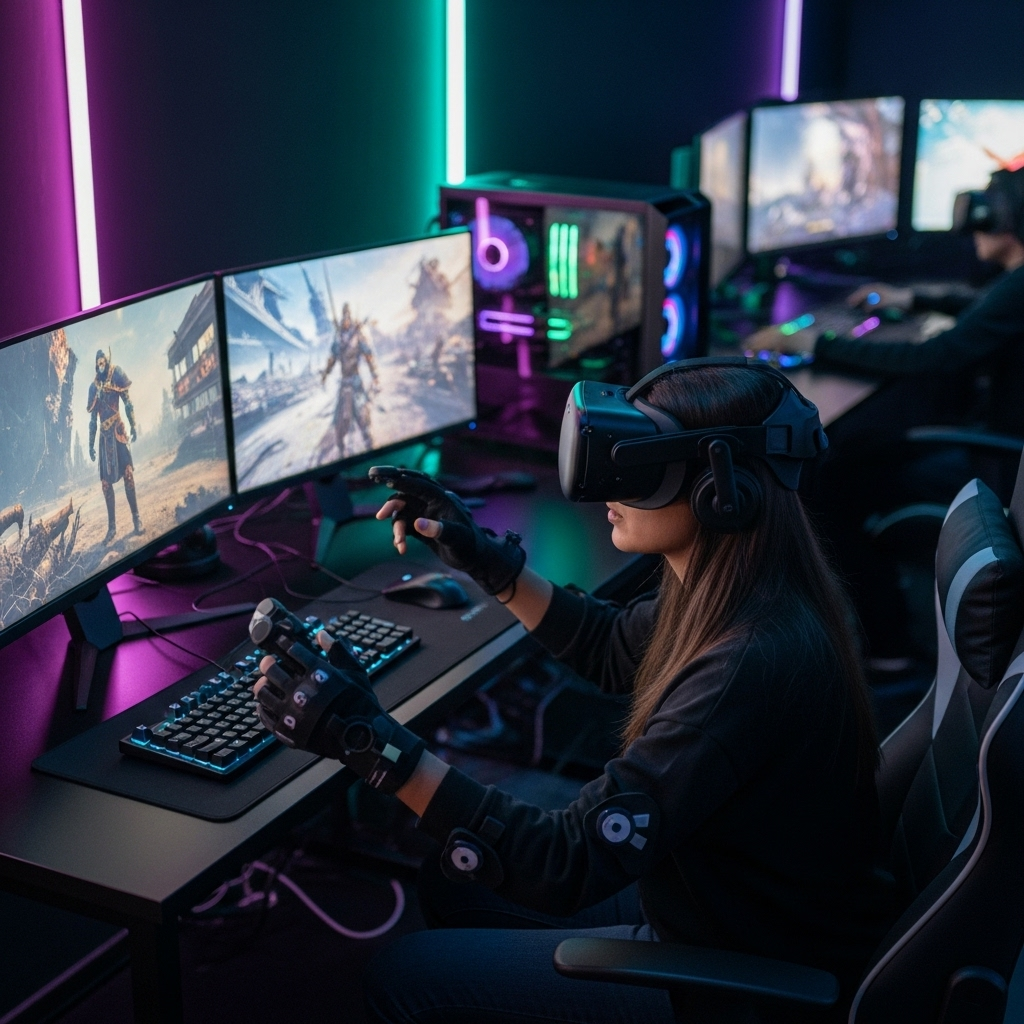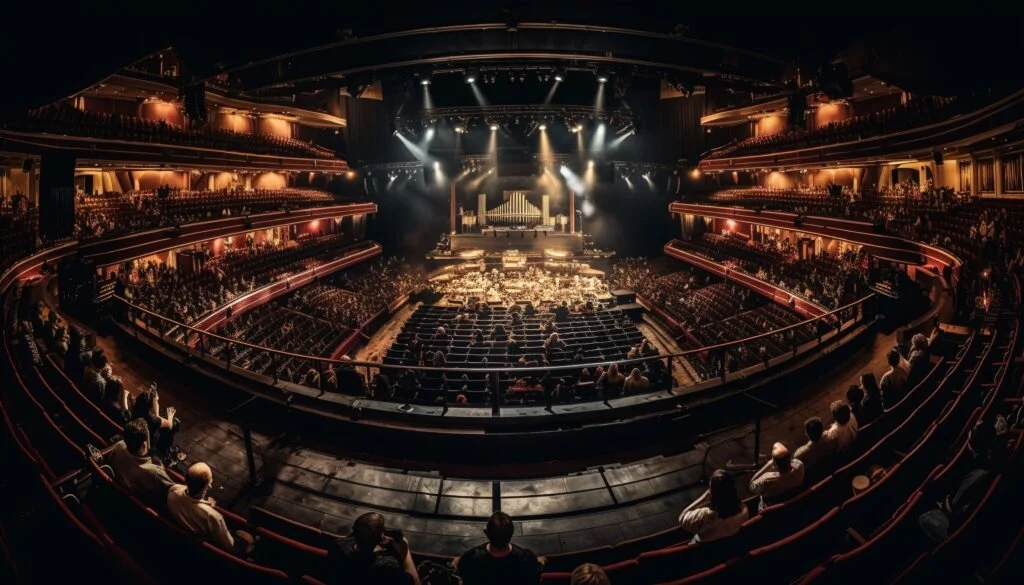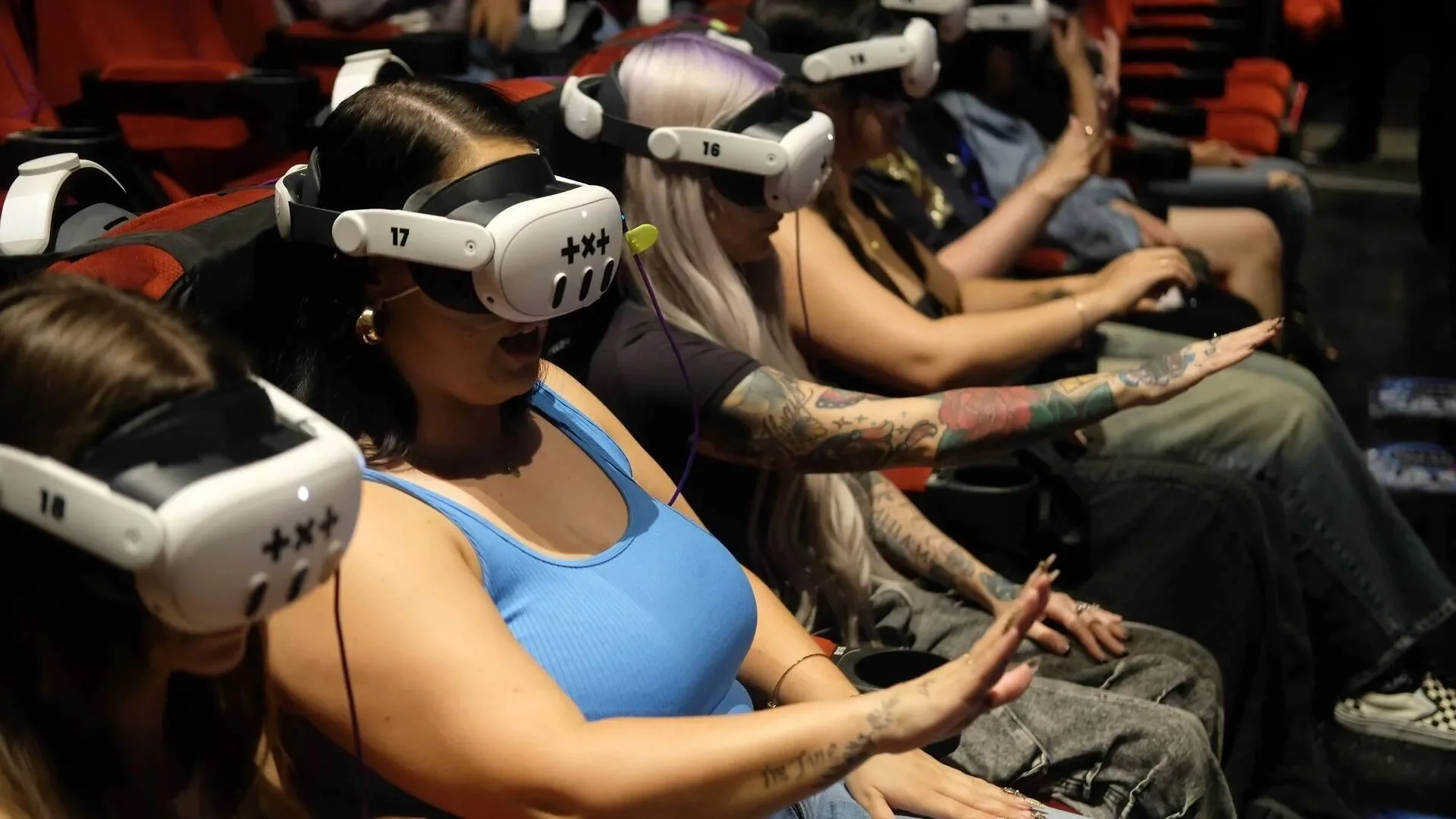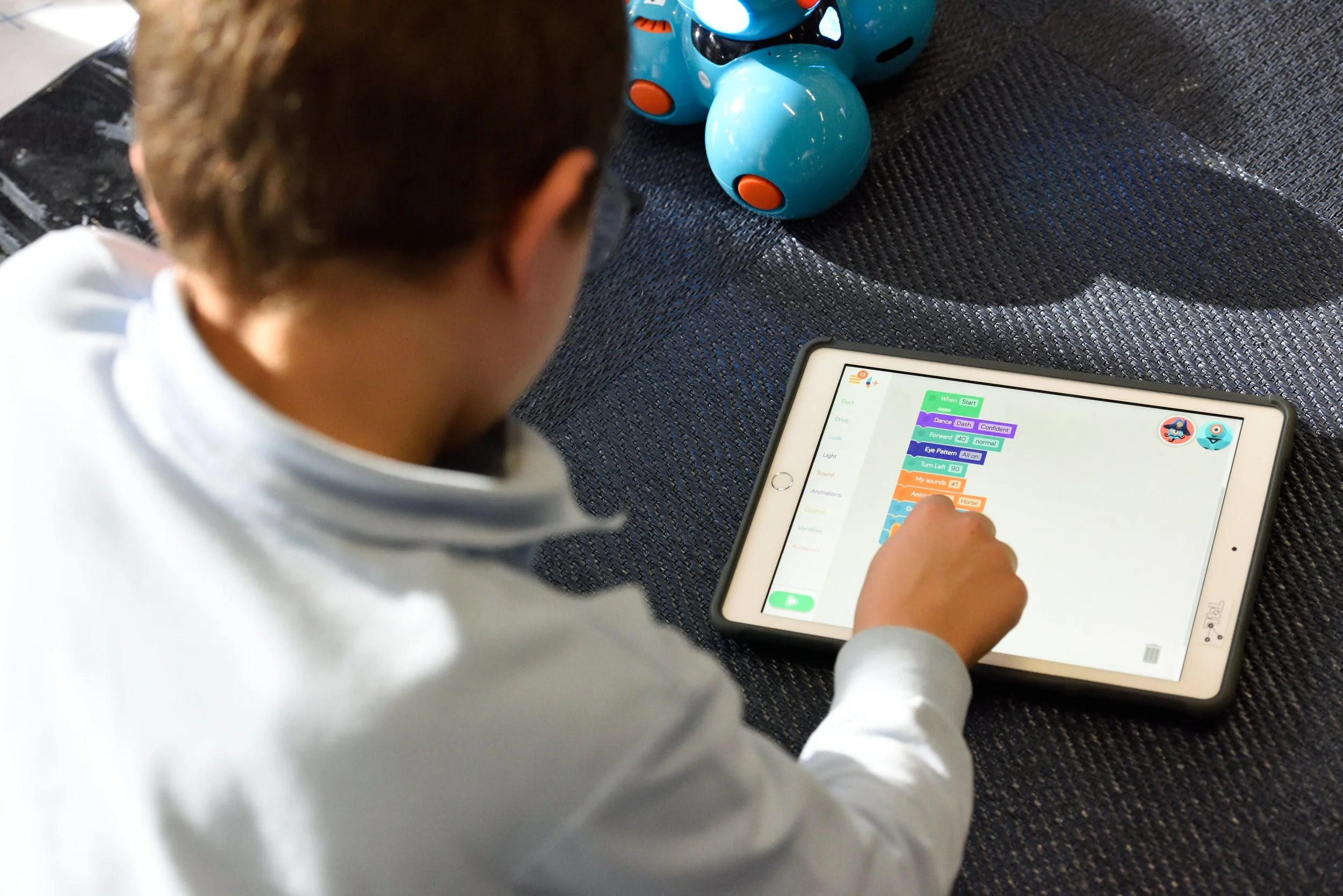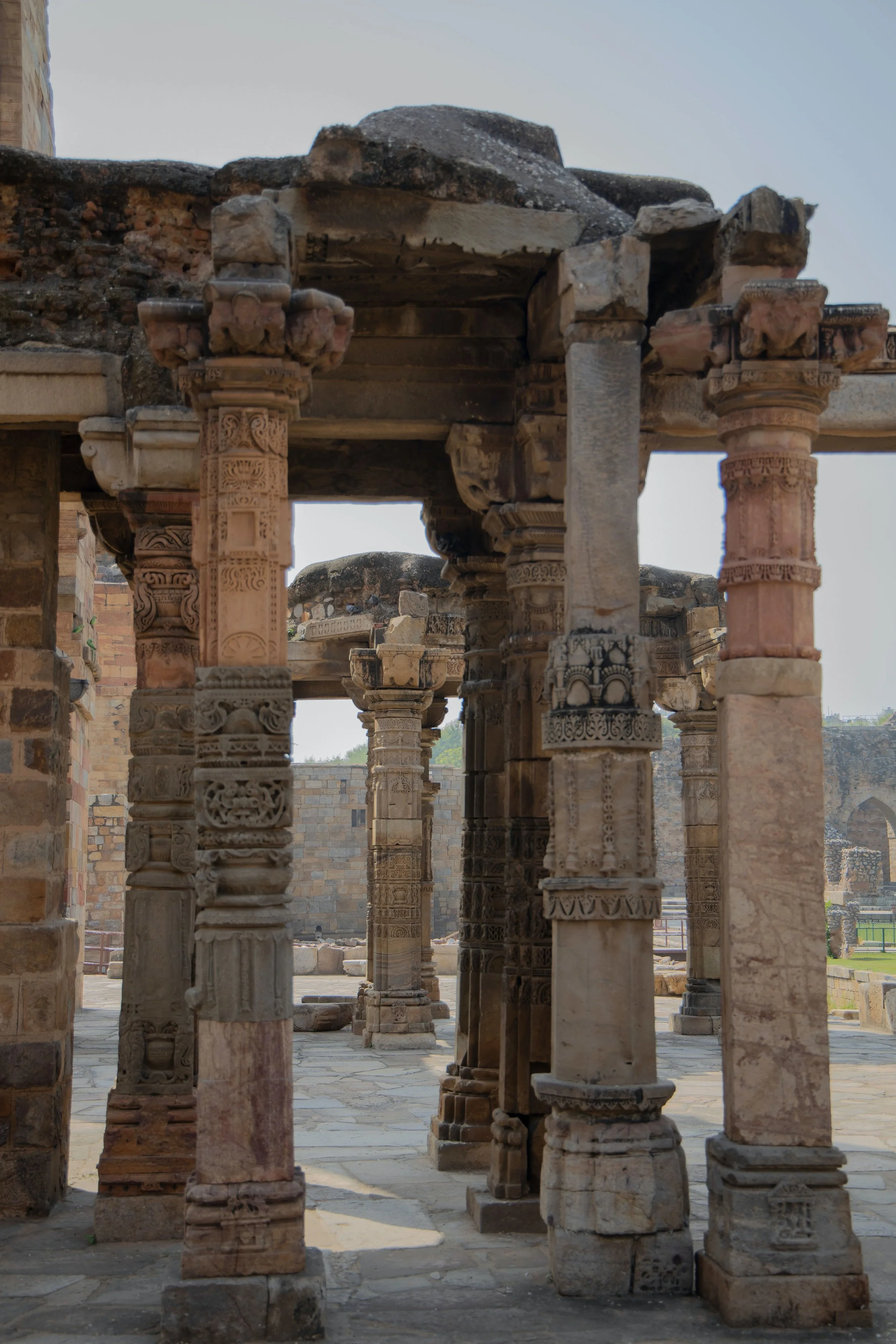This article explores how extended reality (XR) - including augmented, mixed, and virtual reality - is reshaping acting training by layering immersive technologies onto long-established methods like Stanislavski-based technique and the Method. Drawing on examples from Basrah to Juilliard and Odin Teatret, the piece shows how XR can deepen character work, expand dramaturgical research, and personalize feedback through data-driven simulations. At the same time, it raises urgent legal, ethical, and social questions around biometric data, FERPA and HIPAA protections, digital Blackface, and harassment in virtual spaces. Rather than treating XR as a magic solution, the article argues that thoughtful pedagogy, clear institutional policies, and equity-minded design are essential if these tools are to support - not replace - human-centered theatre education.
Extending Reach with Extended Reality: Live Theatre Performance and XR
This article examines how extended reality (XR) technologies are expanding theatre’s reach beyond the physical venue. Building on proshots’ successes and shortcomings, it maps liveness through four components—temporality, exclusivity, spatiality, and interaction—and tests them across emerging formats: immersive dome screenings (Cosm), phone-based AR experiments (All Kinds of Limbo, The Tempest), and avatar-led VR productions (Tender Claws, Adventure Lab). XR’s promise is real—richer presence, audience participation, and radical portability—but so are the hurdles of motion capture quality, cost, technical literacy, and scale. Rather than replacing stagecraft, XR functions as a flexible toolkit that opens new creative and accessible pathways for live performance.
Should The Music Industry Go Virtual? A Case for Investing in VR Concerts
Since the pandemic, the VR concert industry has slowly become more mainstream as worldwide superstars like Megan Thee Stallion, Sabrina Carpenter and TOMORROW X TOGETHER adopt and utilize immersive realities. This article explores what music fans want, available VR concert formats, common technical limitations, and the experiential differences between in-person and VR concerts — questions labels and artists must consider before investing resources and funds into creating VR content.
Advertising Monopolies, AI Policy, and Pirating Issues
This spring, we saw major movements in the legal landscape of digital advertising. Between Google being ruled as an advertising monopolist and Mark Zuckerberg’s war on creative materials, digital advertising is gearing up for change. Read on for more information, including pirating issues, new ambitions for VR movies, and increased access to AI image generation.
Psychological Impacts of VR Experiences and Their Implications for Museums
An Exploration of VR Success Factors in the Museum Field
VR exhibitions have been on the rise for the past decade and are a continuous hot topic. Many metrics can be measured and leveraged when it comes to the evaluation of a museum’s exhibition. However, when it comes to leveraging a VR exhibition in a physical museum, what metrics are currently being assessed and valued in the museum field? What are the factors that make or break a VR exhibition? These are the questions that this article aims to address and explore.
VR and the Evolving Role of Curators and Museum Professionals
In recent years, virtual reality (VR) has emerged as an engaging tool for museums, offering visitors immersive and interactive experiences that go beyond traditional exhibits. However, while VR promises enriched engagement, museum professionals still face multifaceted challenges. So far, most of the research conducted has focused on how museums utilize VR to attract more visitors and, as a result, raise their revenue. But VR is not only about that. Museum professionals and curators face multiple challenges that include integrating technology, curating content, and maintaining the authenticity and educational value of exhibits while meeting the demands of modern-day audiences.
Top 10 Articles of 2023
Museum Computer Network 2023 Conference Takeaways
Staff Researcher, Venetia Liao, attended the 2023 Museum Computer Network Conference (MCN), and wrote about her four key takeaways: (1) Audience Engagement & Visitor Experience In Apps, Websites, Research, and Design, (2) AI, VR/XR/AR Usage & Concerns, (3) Data & Database Management For Collections Management & Marketing Strategy, and (4) Cybersecurity.
TBT: Education, Gamification, & Public Policy
The Final Frontier: Fundraising in a Virtual Space
Fundraising is a vital part of a nonprofit’s ability to achieve its mission. Cultivating relationships with individuals and institutions in this way can help an organization gain economic support, as well as important relationships and visibility. In order to create and maintain these relationships in development departments, organizations need to meet potential partners where they are and inspire them through their mission and projects. Today, and in the near future, these potential donors may likely be in a virtual space, specifically augmented reality (AR) and virtual reality (VR).
TBT: Innovation, Technology, & Theatre
The Key Role of VR in Preserving Cultural Heritage
Virtual reality (VR) has quickly become a mainstay for exhibiting arts and cultural organizations. When looking at it as a concept, “VR has the potential to simulate imaginative and existing physical environments along with their processes. The simulations can be tuned to a highest level of multisensorial realism in order to affect users' visual, auditory, tactile, vestibular, and even olfactory and gustatory senses.” But what does it mean to museums and cultural organizations, and how can it help the arts?
How Immersive Experiences Play a Role in the Fashion Industry
Our world is becoming increasingly digital - in the past year, the metaverse and NFTs have become household buzzwords, causing a massive “gold rush” into developing cutting-edge innovation surrounding immersive experiences. This article primarily focuses on the use of AR in the fashion industry and how more established, traditional brands are embracing this immersive technology in comparison to those born in the Web3 era.
Maximizing Concert Experiences Through AR & VR
The application of Virtual and Augmented reality in music has been around for a while. From collaborative creation and interactive music videos to its incorporation in art museums, it seems as if the arts industry is competing with itself to enhance the audience experience. As concerts are a highly user-oriented experience, these technologies have started gaining more traction in the live music space. The demand for interactive and immersive experiences has called for innovative models to be incorporated within music. Thus, the application of such models is added to the concert experience with the implementation of VR and AR technologies to help maximize its interactivity.
Art-Making & Storytelling for Social Good in VR
Those who have a vested interest in the arts are often curious: how is art impacting its audiences? The Americans for the Arts Arts + Social Impact Explorer presents ten categories for how art can impact the people in its communities, and it is the ultimate challenge of arts organizations to build innovative programs that improve their reach in all ten. To measure impact against this challenge, organizations may analyze ticket sales, subscriptions, donations, and audience surveys. Between income spreadsheet lines, however, there are more questions about how to improve engagement, and – central to this piece – when and how to incorporate new technologies into classic offerings to boost innovation.
Using VR & AR in Live Music
Virtual Reality technology puts the user in a computer-generated environment, allowing them to interact with simulated elements via a headset. On the other hand, Augmented reality incorporates elements that are generated, be it visual, audio, or other sensory elements into the real world via technology. AR technology lets the user position his or her smartphone to a point in the physical world and bring it to life by adding virtual components via this technology.
How Art and Technology Can Work Together to Facilitate Healing
When it comes to the widely discussed topic of mental health, the arts have proven to play a significant role in healing. In fact, artists and scientists have been researching impacts of art on the brain and body for nearly 75 years. The founding hypothesis in art therapy research emerged from the projects of two women curious about how art could help the severely ill, but extensions of their work continue to grow. Like much in our lives, art therapy research is now increasingly embracing immersive technology.
VR and Cultural Heritage Recreation
As museums and heritage attractions are restricted by distancing and capacity rule during the COVID-19 pandemic, digital strategies undoubtedly gather more interest than ever before. Virtual Reality (VR) has been put to use in the cultural sector a way to deliver exciting and immersive exhibitions. The communication between archaeologists and technicians is critical for the accuracy of the VR reconstruction and museums should work closely with their technology team and emphasize their obligation to public education in these creations. This insures that museums can keep the integrity of cultural heritage exhibits while providing an exciting and immersive educational experience of the past with technology that looks toward the future.
What is MR and How Does it Create Exceptionally Immersive Experiences?
MR, or Mixed Reality, is appearing across the arts world, but its actual meaning is not well understood. A strong beginning includes a foundational understanding of the concepts of reality and virtuality. The future application of MR technology is unlimited, increasing the possibility of creating experiences that reflect what is seen in sci-fi films. While many practitioners believe that MR is the future, the technology lacks popularity in the consumer market. However, with the continuous development of MR technology, more cost-effective solutions will be found, and the future of a truly immersive experience will come.




